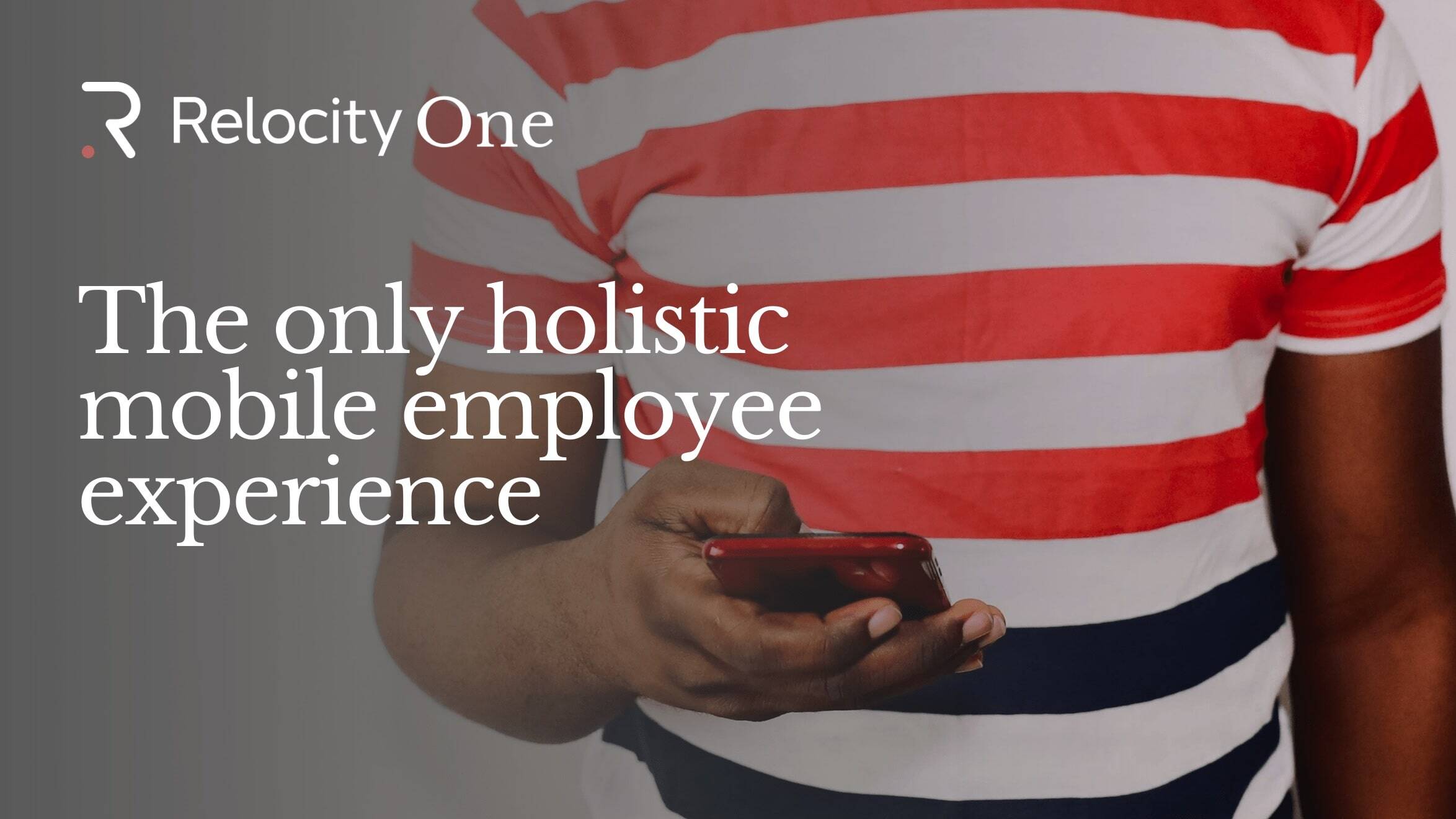Eliminating exceptions with AI and automation for greater compliance and cost containment
Compensation and Benefits teams are under pressure to control relocation costs, reduce policy exceptions, and improve consistency. This article...
“Employees who don’t experience a sense of belonging are 50% more likely to leave within their first year”
Relocating for a new job, whether across the country or the globe, isn’t merely a logistical operation. It’s a profound personal shift that touches identity, social networks, routines, family dynamics, and professional confidence. The emotional terrain is vast and under appreciated. Yet, the tools we rely on to facilitate these moves remain largely focused on tactical checklists: selecting a home, uploading a visa document, completing onboarding forms. These features matter, but they aren’t sufficient.
The true challenge of relocation lies in creating a sense of continuity, grounding, and belonging amid immense transition. Employees facing new cities, cultures, and corporate environments often struggle silently. When artificial intelligence (AI) is applied thoughtfully, it holds the power to create meaningful support, not by replacing the human experience, but by amplifying it. If AI tools don’t make employees feel seen, they’re simply performing transactions. What’s needed instead is transformation.
Relocation impacts far more than a professional address. Studies show it affects day-to-day routines, emotional well-being, family cohesion, and long-term job satisfaction. According to EY’s Global Mobility Study, 68% of relocated employees reported that emotional and social support was lacking during their transition. A sense of disconnection, especially in the first months, significantly increases the likelihood of early attrition. Harvard Business Review reinforces this, noting that employees who don’t experience a sense of belonging are 50% more likely to leave within their first year.
Despite this, many tools designed to support relocation focus on speed and compliance rather than empathy and engagement. In doing so, they miss the essential truth: a technically successful relocation can still be a human failure if it results in loneliness or disengagement.
“69% of employees feel employer and relocation platforms don’t meet their personalization expectations”
One of the primary ways AI can better serve relocated employees is through deep personalization. A 24-year-old moving solo to Berlin has vastly different needs than a 45-year-old executive relocating to Singapore with a spouse and children. Yet, too often, relocation platforms offer identical pathways and recommendations regardless of the user.
Salesforce’s research shows that 66% of people expect digital tools to reflect their preferences and context.
Unfortunately, PwC’s HR Tech Survey indicates that only 31% of employees feel the platforms they use are meaningfully personalized. This is not simply a gap in functionality. It’s a failure of empathy. Personalized experiences help employees feel recognized and respected. When platforms adapt their tone, content, suggestions, and even interface to reflect the user’s specific background and preferences, they validate the complexity of that person’s journey.
One of the most valuable features any AI-enhanced relocation tool can offer is a pathway to human connection. Employees often cite isolation and lack of peer engagement as major challenges after a move, even when other aspects of the transition go smoothly. Mercer found that relocated individuals with access to strong social connections are 43% more likely to complete their assignment successfully.
AI can enable this connection, not by mimicking human interaction, but by surfacing relevant opportunities to connect with real people. These might include local digital communities, Slack or WhatsApp groups, curated introductions to city mentors, or notifications about nearby events that align with a person’s interests or identity. Far from replacing social interaction, AI becomes a bridge to it.
The language, layout, and tone of AI tools have an outsized impact on user experience, particularly when stress levels are high. Interfaces that feel transactional or overly bureaucratic can inadvertently increase anxiety. By contrast, platforms that use affirming language, friendly visual design, and clear progress indicators help users feel supported and in control.
Application in other industries have succeeded by infusing emotional intelligence into their UI and UX. There’s no reason relocation platforms can’t do the same.
Recent surveys have revealed, not surprisingly, that employees prefer simpler tools with fewer features. The reason is clear: relocation is overwhelming enough. Employees are navigating new workplaces, often new countries, possibly new languages, all while staying productive and meeting professional expectations. They don’t need a dashboard with 40 tabs. They need clarity, structure, and a feeling of progression.
Relocity’s approach embraces simplicity without sacrificing functionality. The platform prioritizes clean design and mobile responsiveness, guiding users step-by-step while also integrating resources, community, and communication channels in a seamless interface. (Curious to see how it works? Get a demo of Relocity here.)
Chatbots and automated assistants are often misunderstood, but their true power lies in augmenting—not replacing—human support. When designed correctly, these tools offer a near-human touch that’s timely, scalable, and effective. They can identify when an employee is stuck, detect patterns of disengagement, and escalate concerns to live support or HR when necessary.
According to the Hirebee.ai report, employees using AI-driven engagement tools saw a 25% increase in retention rates. This shows that properly implemented hybrid tools don’t just serve the business—they support the employee experience.
Belonging is cultural. Relocated employees often struggle not because they lack information, but because they lack insight. AI can help fill this void by delivering region-specific etiquette, behavior norms, and cultural context tailored to an employee’s role and background. A U.S. engineer moving to Munich will need different social cues than a Brazilian executive relocating to Tokyo.
Such intelligence cannot be generic. It must evolve dynamically and contextually, informed by real-time learning and localized knowledge bases. That is the promise of AI done right: timely, relevant, and sensitive guidance.
“Nearly half of professionals say their access to mental health support during a move is inadequate.”
Relocation is consistently ranked among the most stressful life experiences. Despite this, mental health resources are often secondary or entirely absent in most relocation tech. EY’s global wellness study revealed that nearly half of professionals say their access to mental health support during a move is inadequate.
AI tools can make a difference by embedding micro-moments of reflection, journaling prompts, wellbeing check-ins, and direct access to local mental health resources. With proper safeguards, AI can even flag elevated stress indicators, based on behavior patterns or language use, and notify HR to offer support, when appropriate and with consent.
To build platforms that genuinely support belonging, we must evolve how we measure success. Instead of focusing solely on compliance or completion rates, relocation platforms should track emotional outcomes: confidence before Day 1, participation in local events, integration into peer networks, and overall satisfaction with the transition.
Organizations are starting to set new standards for belonging metrics. Relocation tech must follow their lead, incorporating feedback loops that capture real employee sentiment throughout the journey, not just after it ends.
The data is clear. When employees feel they belong, companies win. Harvard Business Review reports that organizations with strong cultures of belonging see 56% higher job performance, 50% lower turnover, and 75% fewer sick days. Meanwhile, Brookfield notes that one in four global assignments fail due to poor experience, a costly error given that replacing a relocated employee can cost two to three times their salary.
The business case is not just compelling; it is urgent. In a world where talent is increasingly global, investing in human-centric AI tools is no longer a luxury. It is a competitive imperative.
For mobility leaders and HR professionals, the takeaway is simple but profound: technology should reflect how we see our people. If we treat relocation as merely a task to be optimized, we will continue to miss the mark. But if we build with empathy, cultural awareness, and belonging at the core, AI can become a bridge, not a barrier.
Relocity has built its platform with this future in mind. By blending intelligent automation with deeply human touchpoints, we help employees arrive not just at their destination, but into community, confidence, and connection.
If your AI tools do not make someone feel seen, they are just software. And software alone does not build belonging. But with the right intention, you can.

Compensation and Benefits teams are under pressure to control relocation costs, reduce policy exceptions, and improve consistency. This article...

The future of global talent mobility with AI - 3 use cases The world of global talent mobility is evolving rapidly, and at the forefront of this...

Los Angeles, CA – October 22, 2024 – Relocity, a leader in innovative corporate mobility solutions, is excited to introduce Relocity One, a...
